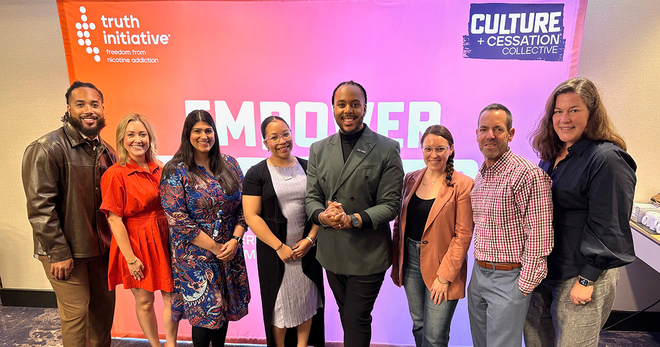States to spend less than 2 percent of tobacco revenue on cessation and prevention
In fiscal year 2017, states will bring in $26.6 billion in payouts from the 1998 tobacco settlement and tobacco taxes, but will spend less than 2 percent of it on programs to curb tobacco use.
2%
States will bring in $26.6 billion in payouts from the 1998 tobacco settlement and tobacco taxes, but will spend less than 2% of it on programs to curb tobacco use
Those figures are according to a report released today from the Campaign for Tobacco-Free Kids and a coalition of public health organizations, including Truth Initiative®. The report notes that states will spend $491.6 million on tobacco prevention and cessation in 2017, about one-seventh of the $3.3 billion the U.S. Centers for Disease Control and Prevention recommends states spend.
Highlights from the report, “Broken Promises to Our Children: A State-by-State Look at the 1998 Tobacco Settlement 18 Years Later,” make clear that states are once again missing an opportunity to save millions of lives and billions of dollars in health care costs by continuing to shortchange proven tobacco prevention and cessation programs.
- A majority of states—29 and the District of Columbia—are spending less than 20 percent of what the CDC recommends. New Jersey, which ranks last in the report for the third year in a row, and Connecticut have allocated no state funds for tobacco prevention programs. (Learn more about how each state ranks here.)
- North Dakota is the only state that uses state revenue to fund tobacco programs at the level the CDC recommends. (Alaska meets the threshold when federal grant funds are included.) Only one other state, Oklahoma, provides even half the recommended funding.
- For every $1 the states spend to reduce tobacco use, tobacco companies spend more than $18 to market tobacco products. Tobacco companies spent $9.1 billion to market cigarettes and smokeless tobacco in 2014, according to recent data from the Federal Trade Commission.
With the report, Truth Initiative and partner organizations are challenging states to do more to fight tobacco use—the nation’s number one preventable cause of death—and help make the next generation tobacco-free.
“With youth smoking rates at a historic low of 6 percent, we are on the brink of realizing the greatest public health victory of our time—to create a tobacco-free generation,” said CEO and President of Truth Initiative Robin Koval. “States need to fund programs that accelerate our progress toward this historic and achievable goal, not slow it down. It is up to state leaders to counteract the billions of dollars Big Tobacco continues to spend every year searching ever harder to find replacement smokers. Well-funded youth and young adult prevention programs make a tremendous difference and will help make this the generation that ends tobacco for good.”
More in tobacco prevention efforts
Want support quitting? Join EX Program
By clicking JOIN, you agree to the Terms, Text Message Terms and Privacy Policy.
Msg&Data rates may apply; msgs are automated.


